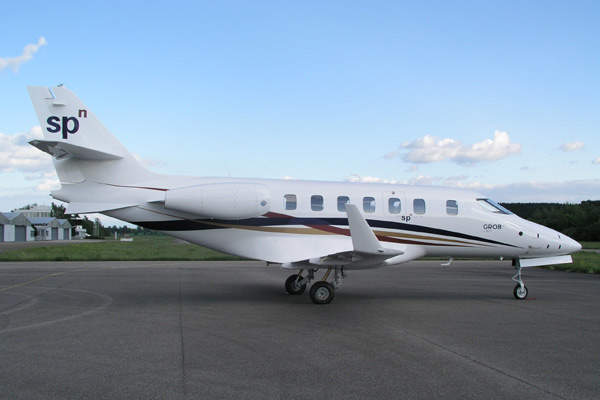SOURCE: RAUNAK KUNDE / NEWS BEAT / IDRW.ORG


In a significant development for India’s defense aerospace sector, sources close to idrw.org report that the Indian Air Force (IAF) is expressing keen interest in Tata Advanced Systems Limited’s (TASL) High-Altitude Long-Endurance (HALE) program based on the Grob G 180 SPn platform. TASL, a subsidiary of the Tata Group, acquired the intellectual property rights for the German-origin Grob G 180 corporate jet in 2021, with plans to transform it into a manned military aircraft tailored for intelligence, surveillance, and reconnaissance (ISR) missions.
In 2021, TASL made a strategic acquisition by securing all intellectual property rights for the Grob G 180 SPn, a low-wing, twin-engine composite corporate jet originally designed by German manufacturer Grob Aerospace. The platform, which never reached serial production due to financial constraints faced by Grob, was identified by TASL as a promising foundation for military applications. According to TASL, the aircraft is being re-engineered into a manned HALE platform capable of operating at altitudes of 41,000 feet, with a maximum ceiling of 45,000 feet. With a range of 1,800 nautical miles, an endurance of 6–7 hours, and a payload capacity exceeding 1,000 kg, the modified Grob G 180 SPn is designed to meet the IAF’s ISR requirements.
TASL’s vision for the platform is to create a cost-effective, versatile aircraft that can perform critical missions such as signals intelligence (SIGINT), electronic intelligence (ELINT), and cross-border surveillance. Unlike unmanned aerial vehicles (UAVs) like the US-made Predator drones, the Grob G 180 SPn will be manned, offering unique advantages in terms of operational flexibility and real-time decision-making. The aircraft’s ability to operate from grass and gravel airstrips further enhances its versatility, making it suitable for deployment in diverse terrains, including India’s mountainous border regions.
The IAF’s interest in TASL’s Grob G 180 SPn HALE program comes at a time when India is seeking to bolster its ISR capabilities amid heightened regional tensions, particularly along its borders with China and Pakistan. The IAF retired its MiG-25R reconnaissance aircraft, which operated at altitudes between 65,000 and 85,000 feet, due to high maintenance costs and the availability of alternative technologies like satellites and UAVs. However, the Grob G 180 SPn offers a compelling manned alternative that bridges the gap between high-cost foreign platforms and domestic innovation.
Sources indicate that TASL has made significant progress in converting the corporate jet into a military HALE platform, with the aircraft undergoing testing and integration of specialized payloads for ISR missions. The IAF’s interest is driven by the platform’s potential to provide persistent surveillance, rapid response capabilities, and the ability to carry advanced indigenous sensor suites. Unlike foreign platforms, which often come with restrictions on modifications, the Grob G 180 SPn’s IP ownership allows TASL to customize the aircraft to meet India’s specific operational needs, integrating systems like ELINT and intelligence, surveillance, target acquisition, and reconnaissance (ISTAR) payloads.
Technical Specifications and Capabilities
The Grob G 180 SPn HALE platform is designed to deliver robust performance for ISR missions. Key specifications include:
- Altitude: Operational altitude of 41,000 feet, with a maximum ceiling of 45,000 feet, enabling it to evade many ground-based threats.
- Range and Endurance: A range of 1,800 nautical miles (approximately 3,400 km) and endurance of 6–7 hours, suitable for extended surveillance missions.
- Payload Capacity: Over 1,000 kg, allowing integration of advanced sensors, cameras, and electronic warfare equipment.
- Versatility: Capable of landing on grass and gravel airstrips, enhancing operational flexibility in forward areas.
- Propulsion: Powered by two Williams FJ44-4A turbofan engines, providing reliable performance at high altitudes.
NOTE: Article cannot be reproduced without written permission of idrw.org in any form even for YouTube Videos to avoid Copy right strikes. Websites doing illegal reproductions will get DMCA and Legal Notices.